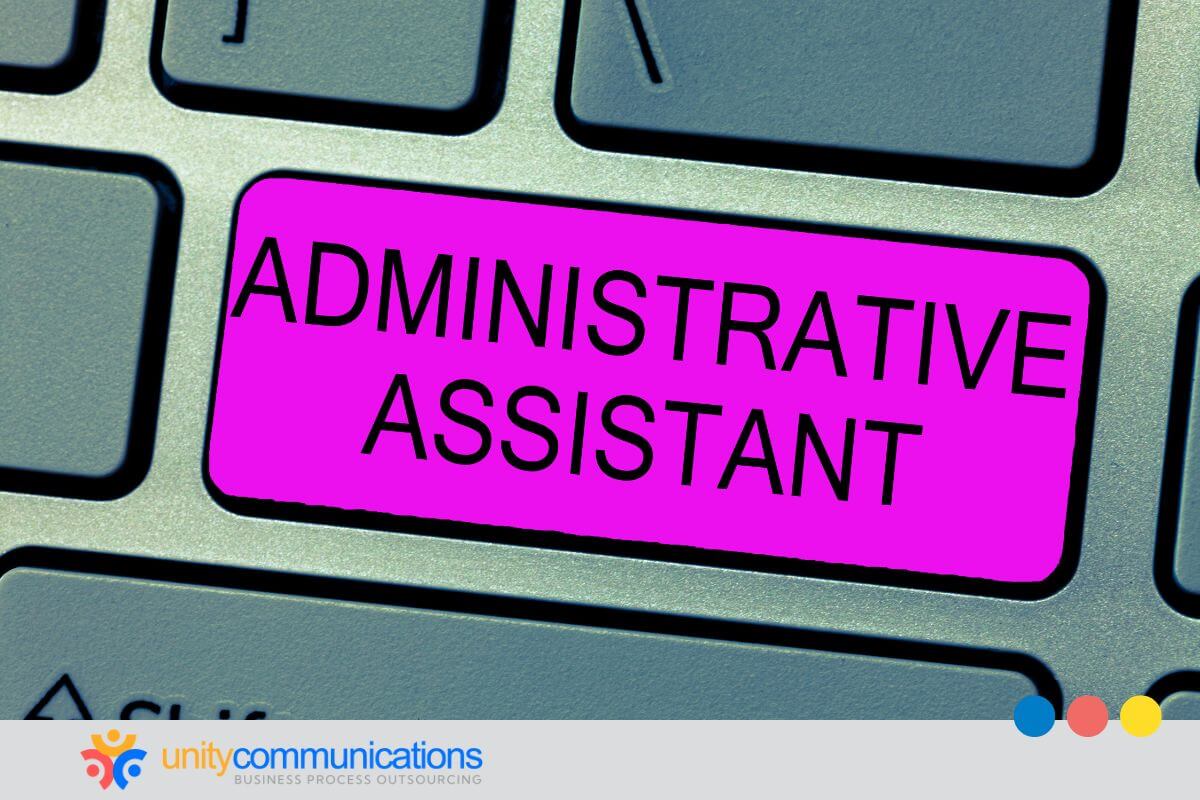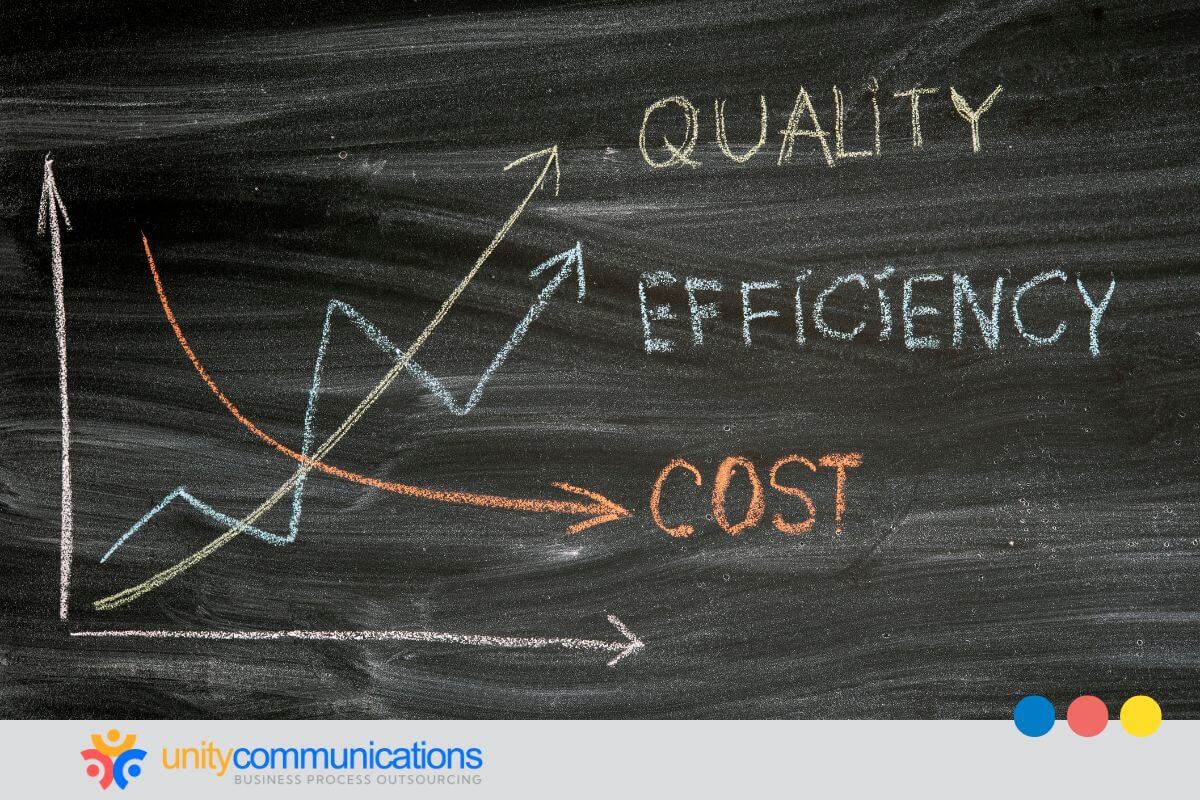Table of Contents
The increasing integration of remote professionals in healthcare settings is changing how medical teams operate, enhancing efficiency and patient care. Virtual medical assistants (VMAs) support healthcare teams in conducting patient scheduling, communication, and data management.
By handling routine administrative duties, a VMA reduces the workloads of internal medical staff, improving productivity and minimizing burnout. Keep reading to learn how VMAs can streamline operations and create a more collaborative and effective healthcare environment.
Key areas where virtual medical assistants can support healthcare teams

VMAs are increasingly becoming indispensable in the healthcare industry for their significant impact on operational efficiency and service delivery. They seamlessly integrate into various aspects of healthcare operations for a more streamlined and effective approach to patient care.
These professionals are often sourced through business process outsourcing (BPO). But what is BPO? It is the strategy of contracting third-party service providers to handle various business processes. How outsourcing works is the BPO firm deploys skilled VMAs to manage outsourced business functions.
Here are the critical functions virtual medical assistants take on to support healthcare teams.
Administrative support
Virtual medical assistants can manage administrative tasks such as appointment scheduling, patient data entry, and medical billing. Healthcare BPO service providers extensively train VMAs in these areas and in applicable industry regulations and data security protocols to maintain efficient and compliant processes.
With VMAs handling the administrative burden in healthcare operations, internal teams can dedicate their expertise to more critical tasks. This arrangement increases productivity and improves care delivery.
Patient interaction and follow-up
VMAs enhance patient interaction and follow-up by efficiently managing communications, appointment reminders, and follow-up care. They handle inquiries through various channels, ensuring timely and accurate responses to keep patients informed and engaged.
They automate appointment reminders to inform patients of their scheduled visits and reduce no-show rates. VMAs also track patient progress, schedule follow-up appointments, and provide medication and therapy adherence reminders.
By efficiently handling these processes, virtual medical assistants improve patient engagement and foster a more proactive and supportive healthcare experience.
Benefits of hiring virtual medical assistants to support healthcare teams

Integrating virtual medical assistants into healthcare operations lets organizations efficiently manage workflows and subsequent costs. This shift substantially enhances how medical teams operate.
Learn how below:
Team efficiency
Virtual medical assistants leverage advanced tools and software to streamline appointment scheduling, data entry, and medical billing processes, minimizing errors and delays. Meanwhile, in-house teams can zero in on critical patient care activities. This is the advantage of outsourcing administrative tasks in healthcare to VMAs.
Cost efficiency
By engaging VMAs through BPO, healthcare practices can maintain a lean in-house administrative staff. This approach minimizes overhead costs associated with hiring, training, and maintaining a larger administrative workforce. It also translates to significant cost savings that businesses can reallocate to growth initiatives.
Additionally, the healthcare process in BPO is flexible and adaptable. VMA services can adjust to varying demand levels while using resources efficiently and keeping costs down. With virtual medical assistants supporting lean healthcare teams, organizations can distribute financial resources more effectively and enhance cost efficiency.
Integrating virtual medical assistants into existing healthcare teams

Suppose an organization is considering hiring a virtual assistant for its Phoenix healthcare practice. What must it do to successfully integrate the VMA into its internal team? Keep reading to learn the primary considerations for engaging virtual medical assistants:
Training and onboarding
Integrating VMAs into healthcare teams requires thorough training and onboarding to ensure compliance with healthcare protocols and privacy standards. Here are strategies to facilitate this process:
- Begin with a detailed orientation session covering the healthcare facility’s mission, values, and operational structure.
- Provide comprehensive training on specific healthcare protocols, including patient intake, appointment scheduling, and medical record management.
- Ensure VMAs are well-versed in the Health Insurance Portability and Accountability Act of 1996 (HIPAA) and other privacy standards to maintain patient confidentiality and data security.
- Establish a support system where VMAs can regularly consult with experienced staff and supervisors for guidance and troubleshooting.
- Implement a structured system for monitoring VMA performance and providing continuous feedback to foster improvement and adherence to standards.
By following these guidelines, healthcare teams can smoothly and effectively integrate VMAs into their operations. Regular updates and training refreshers further support the VMAs in maintaining high service standards.
Technology and tools
Leveraging essential software and tools is crucial to seamless communication and task management between VMAs and in-house healthcare staff. Here are the most essential technologies and tools to facilitate VMA integration:
- Electronic health records (EHR) systems streamline patient information management and provide VMAs with access to real-time patient data.
- Secure messaging platforms enable efficient communication between VMAs and healthcare staff while complying with privacy standards.
- Task management software such as Trello or Asana help organize and track administrative tasks, enhancing productivity and accountability.
- Telehealth platforms facilitate remote consultations and virtual patient interactions, allowing VMAs to assist in telemedicine services.
- Document management systems centralize and secure important documents, making it easier for VMAs to manage and retrieve information as needed.
Utilizing these technologies allows VMAs to effectively collaborate with healthcare professionals, improving workflow and patient interaction. Regular updates and training on these tools enhance their effectiveness and usability.
Challenges virtual medical assistants face in supporting healthcare teams

Leveraging virtual medical assistants brings many benefits to healthcare operations. However, it poses potential challenges, such as maintaining data security and human touch in patient care. Examine these challenges and ways to overcome them:
- Securing data. VMAs handle critical patient data during administrative support. Organizations must implement robust encryption and access controls and provide regular training on HIPAA compliance to VMAs engaged through BPO in telemedicine and healthcare.
- Maintaining human touch. Virtual patient interactions can feel impersonal. Healthcare practices should provide VMAs with continuous training in empathetic communication to preserve the human touch in patient support.
- Resolving technical issues. Technical problems can disrupt workflow. Build a reliable information technology (IT) support system that can quickly resolve technical issues VMAs might encounter. The BPO firm can provide this type of service alongside VMAs.
- Bridging the skill gap. Choosing the right virtual assistant is essential to avoid skill gaps. Assess candidates’ experience, expertise, and compatibility with the healthcare team’s needs, culture, and systems.
Addressing these challenges proactively ensures that VMAs can enhance healthcare services without compromising quality or security. Implementing these solutions fosters seamless and effective collaboration between VMAs and healthcare professionals.
The bottom line
Virtual medical assistants (VMAs) support healthcare teams, enhancing efficiency and driving cost savings. By handling administrative tasks, VMAs allow healthcare professionals to focus more on patient care, leading to improved outcomes and streamlined operations.
Healthcare providers should consider VMAs a strategic asset to optimize their services and stay competitive in the evolving healthcare landscape. Let’s connect to explore the benefits of integrating VMAs into your team today.




